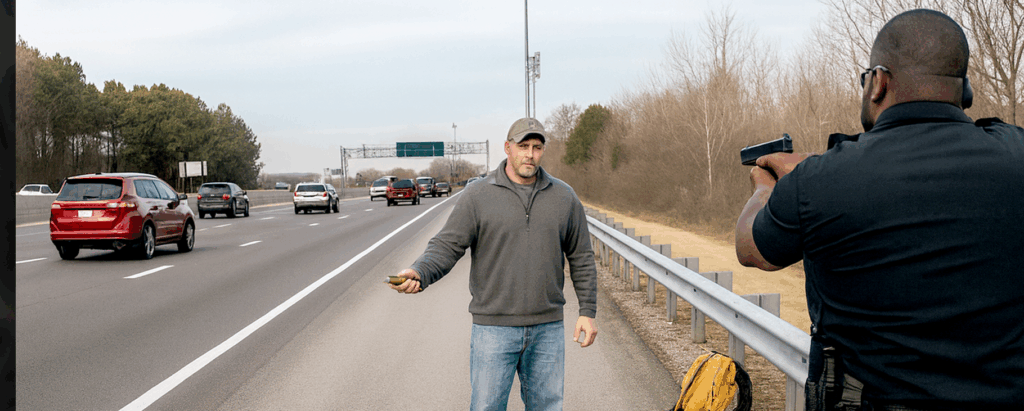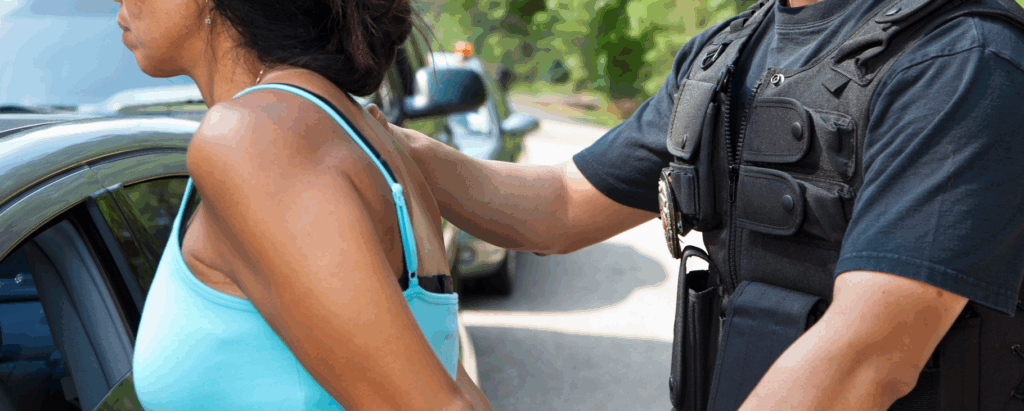Originally published on the Force Science Institute website. Republished here with permission.
When faced with violence, the police are expected to quickly conduct accurate threat assessments and respond with decisive, measured and effective use of force. The foundation of this consistent, high-level performance is the ability to operate at the optimal level of arousal—that place between too relaxed and too amped up.
Now a growing body of research offers evidence that remaining goal-oriented and externally focused can facilitate optimal arousal and expert performance.
Improve Your Position
To prepare for expert performance, officers are taught to use available time to improve their tactical advantage. Well before the next car chase, medical response or deadly force encounter, officers are encouraged to repeatedly visualize perfect performance. In the comfort of their own home, they can take advantage of the brain’s unique ability to learn from what we vividly imagine. These detailed visualizations not only improve decision-making but also the motor performance involved in arrest and control techniques, weapon manipulation and pre-programmed response patterns.
The closer officers get to potentially violent, real-world encounters, the less time is available for them to “improve their position.” Even so, officers learn to use the pre-event time (like the travel involved with warrant service) to manage emotional arousal and facilitate effective performance through tactical breathing, visual imagery and self-talk.
Unfortunately, in the face of imminent threats—when time is most limited—attempts to regulate heartrates or manage arousal states through regulated breathing, visualization or self-talk can distract officers and deprive them of the vital attentional and cognitive resources necessary to accomplish the task at hand. But even at the point of contact, officers are not helpless and there is still much they can do in that moment.
To function effectively in the face of imminent threats, research shows that officers, like elite athletes, should be externally focused and executing a goal-oriented task. And, while having a plan and executing the plan can reduce uncertainty and associated stress, the benefits of remaining externally focused and goal-oriented go beyond simply reducing uncertainty. It turns out that the more you focus, the easier it is to focus.
A “Quiet Eye” Review
Students of the Force Science Institute will remember Dr. Joan Vicker’s “Quiet Eye” research, in which a person’s ability to maintain visual focus and concentration during physical performance is measured. With specialized equipment, Dr. Vickers determined where a person was looking, on what, when, and for how long. The “Quiet Eye” was then identified as that period of sustained focus that begins before a critical phase of performance.[1]
Regardless of the sport or activity, the Quiet Eye studies have shown that experts know what critical information to look for, where to look for it, and when. They find the information sooner and maintain their sustained focus (gaze) longer than those with less experience in the given task.
Once the Quiet Eye characteristics of experts are identified, novices who are trained to adopt these characteristics can experience greater improvements in decision-making and motor performance.
Although the term “Quiet Eye” evokes images of a calm, almost meditative focus, it is frequently noted as athletes engage in dynamic sports. The “sustained focus” characteristic of the Quiet Eye does not require a long, drawn out visual fixation. In fact, the optimal duration of the Quiet Eye can be quite fast depending on the activity. If you are putting a golf ball, the optimal duration of focus may be 2–3 seconds, while a 900-ms fixation might be ideal when shooting a basketball. For law enforcement, it may be a split-second threat assessment or sight picture that facilitates optimal decisions and performance in deadly force encounters.
The duration of the sustained focus is only part of the Quiet Eye story. Experts also know where to look and when. Research has shown that once the Quiet Eye characteristics of experts are identified, novices who are trained to adopt these characteristics can experience greater improvements in decision-making and motor performance.
Not surprisingly, researchers have already begun to explore the application of Quiet Eye research on law enforcement training and performance.
Quiet Eye and Law Enforcement Performance
In 2008, Dr. Bill Lewinski, the executive director of the Force Science Research Center, joined Dr. Vickers in a study designed to identify and distinguish the Quiet Eye characteristics of elite law enforcement officers when compared to novice shooters. The study, titled Performing under pressure: Gaze control, decision making and shooting performance of elite and rookie police officers, was published in the Human Movement Science Journal and was the subject of the two-part Force Science News series How Your Eyes Can Cast Your Fate in a Gunfight.
The initial Quiet Eye research in law enforcement identified what, where and when expert officers focused their attention and for how long. The implications of this research were tremendous, as novice officers could theoretically improve motor performance and decision-making by studying an expert’s focused approach to deadly force threat assessments and response.
The Brain Gets Involved
The benefits of the Quiet Eye practice go beyond merely looking at the right place at the right time. Intentionally focusing on a location or a goal helps us process information more effectively. When we operate in an unfocused state, we use both systems in the brain (the goal-directed dorsal system and the stimulus-driven ventral system) that exert control over our attention. The simultaneous use of these two systems results in information being processed that is both helpful and detrimental to performance.
However, when we operate in a brief, directed-focus state, the stimulus-driven system is suppressed. This prevents distracting and irrelevant information (cognitive or emotional) from being processed. The result is a goal-directed system capable of maintaining a longer duration Quiet Eye. This allows us to focus on the right information at the right time, resulting in more effective, goal-directed attentional control and a reduction of the distractions that disrupt performance.
More Help from the Brain
Beyond Vicker’s studies, new research published in Nature Neuroscience further supports the theory that goal-directed behavior (having and executing a plan and focusing on bringing about an objective) results in a neurological process that reduces distractions by chemically suppressing the stimulus-directed system (ventral) of the brain.[2] In this study, researchers found that the successful execution of goal-directed objectives released serotonin, which suppresses distractions that consume our limited attentional resources. For law enforcement, this means that having a goal-oriented plan can result in an additional capacity to expertly focus on threat assessments and response. Focus facilitates focus.
It turns out that the more you focus, the easier it is to focus.
Dr. Lewinski is encouraged by the findings of these studies. “It is characteristic of great athletic performance where athletes—operating in complex and dynamic situations under high levels of physiological and emotional arousal—utilize focus, experience, and training for great decision-making and performance,” he says. “It’s not surprising that many of the law enforcement and military personnel I have interviewed have credited their survival and ability to save others on their decision to focus on what needed to be done in the moment, despite the life-threatening and chaotic circumstances they were operating in. From these observations, studies, and a robust body of research on experts, it’s clear that achieving an expert level of performance requires us to train officers’ skills and attentional focus under stress. Considerable time should be spent teaching threat assessments, pattern recognition, and decision-making at all stages of the officer’s career.”
Additional Reading
For more information on Quiet Eye research, consider the following publications:
- Performing under pressure: Gaze control, decision making and shooting performance of elite and rookie police officers
- How Your Eyes Can Cast Your Fate in a Gunfight (Part 1)
- “Point Shooting” Clarification…Plus: What New Gaze Pattern Findings Mean for Your Training (Part 2)
- The Role of Mental Processes in Elite Sports Performance
Notes and References
- The QE is defined as the final fixation or tracking gaze that is located on a specific location or object in the task space within 3 degrees of visual angle (or less depending on the task) for a minimum of 100 ms.
- Yoshida K, Drew MR, Mimura M. et al. Serotonin-mediated inhibition of ventral hippocampus is required for sustained goal-directed behavior. Nat Neurosci. 2019;22:770–777.
[strategem_author][vc_custom_heading text=”Perception, Recall & Use of Force Incidents
`{`Explainer`}`” font_container=”tag:h2|font_size:36.73|text_align:center|color:%23ffffff” use_theme_fonts=”yes”]



